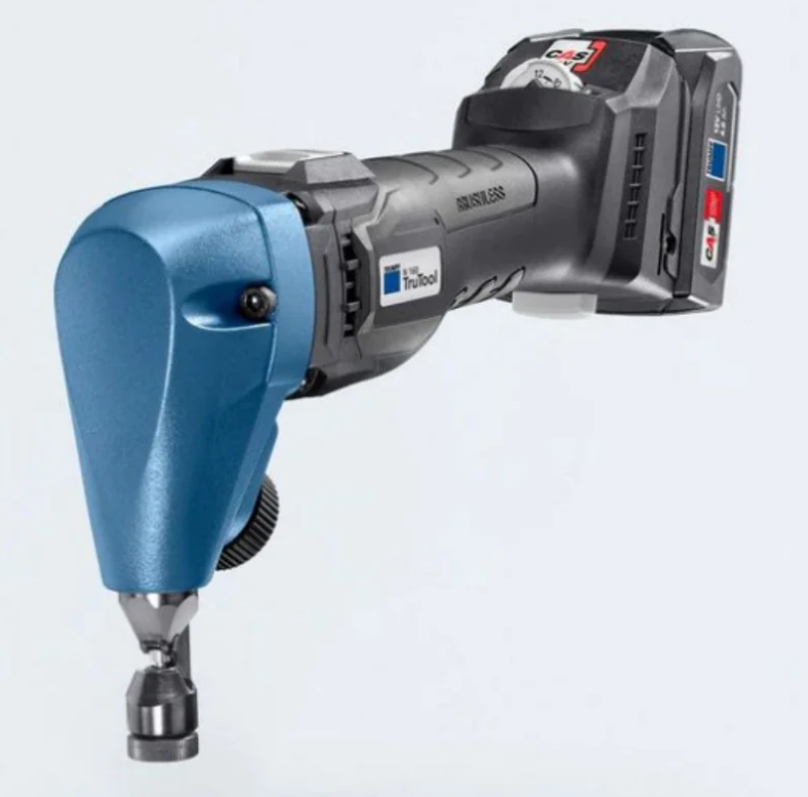We all know that having the right tools for the job is essential. And for working with sheet metal, this means making a very important choice – nibblers or shears? Both tools are fantastic, and neither is better than the other. However, they are each suited to different tasks and knowing when to use, which is crucial to ensuring precise cuts, an undamaged workpiece, and your safety.
Every job is different. Working with heavy-duty sheet metal will have other demands than working with light gauge metal. Working with corrugated sheets will have its own unique requirements too. And whether you need straight lines or intricate curves will also affect which tool is suitable for the job.
Nibblers
A nibbler is named for its cutting method. They use a punch and die assembly, which destroys the material in front of it – essentially nibbling away at the material. Sheet metal nibblers work at high speeds, cutting through sheet metal and leaving behind semicircular chips.

Nibblers can cut straight lines, and the metal around the cut will be undistorted. However, nibblers are not recommended for cutting fine lines. Where nibblers excel is their ability to tight curves and intricate shapes. This makes them a great and versatile choice, especially in the hands of an experienced operator with a steady hand and precise control.
Another notable benefit of nibblers is their ability to handle the peaks and troughs of corrugated metal without jamming or becoming stuck.
Shears
Shears deliver repeatable sheet metal cutting and come in two main types; single cut shears and slitting shears (also called double cut shears).
Single Cut Shears
Single cut shears cut straight through sheet metal without producing material waste. They are comprised of a single sharpened blade and a fixed blade or anvil. The movable blade cuts against the anvil or fixed blade with the sheet metal positioned between them.

Unlike nibblers, shears are not designed for cutting curves. They are created for straight cuts. And they do so excellently, producing clean lines. They do, however, cause distortion causing bending and warping at the edges of the metal. Therefore they are not recommended for tasks requiring the metal to remain perfectly flat. But due to their high cutting capacity, they are suited to heavy-duty tasks.
Slitting Shears
Slitting shears differ from single cut shears in several ways. They are, in some ways, a middle ground between nibblers and single cut shears. They are not strictly limited to cutting straight lines like single cut shears, but they cannot offer the same tight curves as nibblers. Also, unlike single cut shears, slitting shears do remove material. They use two separate cutters and remove a thin strip of material. But, in exchange, the distortion to the edges of the sheet metal are lesser than with single cut shears.

Slitting shears work best with light gauge sheet metal. They provide a clean cut with minimal waste product and distortion. They are ideal for tasks that fall outside (or between) intricate cutting suited for nibblers and heavy-duty tasks that require single cut shears.
No matter the task at hand, this suite of tools covers almost all of your requirements when it comes to cutting sheet metal. Combine them with a circular and plunge saw, and you can take virtually any sheet metal cutting job.

